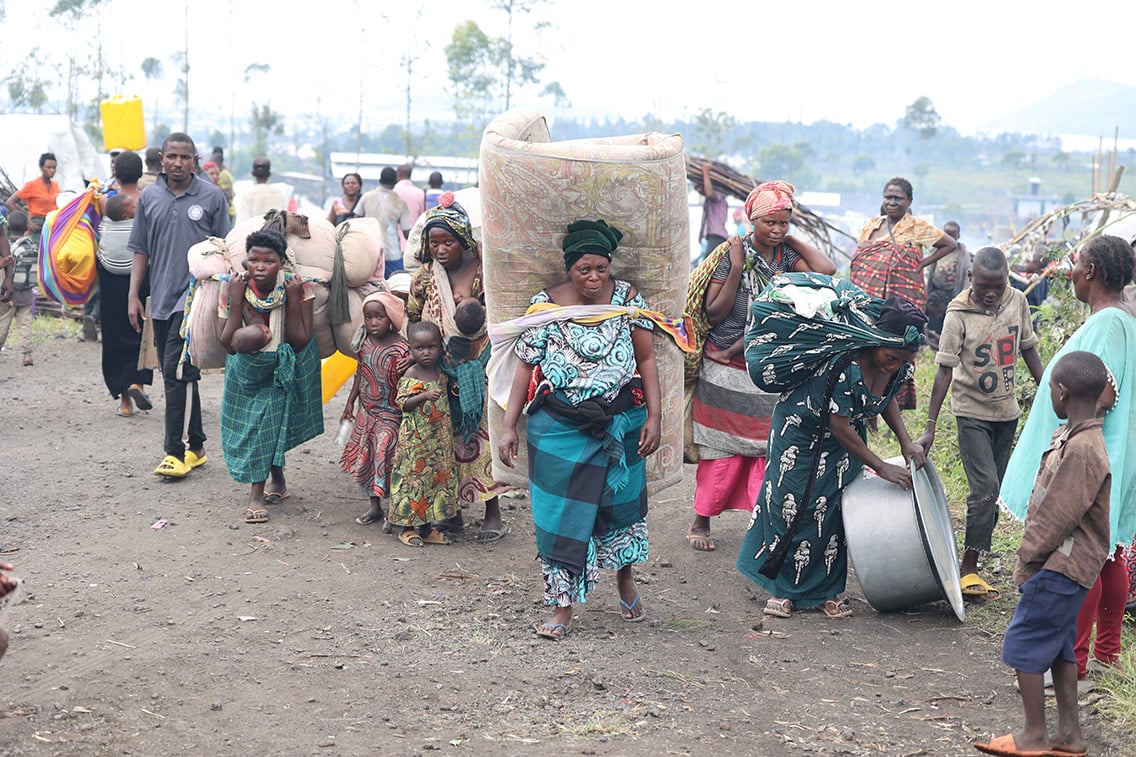Angola: Repatriation airlift launched for vulnerable in Bas Congo region of DRC
Angola: Repatriation airlift launched for vulnerable in Bas Congo region of DRC
UNHCR yesterday (18 December) launched a repatriation airlift for some of 12,700 vulnerable Angolan refugees from Bas Congo in the Democratic Republic of the Congo (DRC). One plane, carrying 53 refugees, took off from Ndjili airport in the DRC and flew to Angola. Today, four flights are scheduled. The airlift is part of the last phase of Angolan repatriation. Once completed later this month, it will mark the end of our four-year repatriation programme for hundreds of thousands of Angolan refugees.
The flights are taking Angolan refugees to the northern Angolan provinces of Mbaza Kongo and Uige. The Angolan government contributed an initial amount of US$400,000 to the overall cost of the airlift over the next 10 days, with an average of three flights a day. In a separate airlift, the Angolan national airline (TAAG) is to fly some 530 refugees back to the capital Luanda.
UNHCR officially ended the repatriation operation for all Angolan refugees living in refugee sites in four countries bordering Angola in late 2005, but agreed to extend the repatriation programme for a further year to help those living outside camps to return home before the end of this year.
This year, we registered nearly 120,000 so-called spontaneously settled Angolan refugees out of the total 146,000 in the DRC. This particular group of refugees in the DRC is unique, as they settled among Congolese communities and for decades lived and worked alongside their hosts. During this year's registration, some 60,000 of the refugees in the DRC said they wanted to return to Angola. UNHCR agreed to assist more than 20,000 vulnerable refugees and their dependants - the elderly, single mothers without steady family support networks, unaccompanied children and those unable to return on their own. This exceptional programme started in October. The majority of the group was repatriated by land convoys. Due to extremely poor state of the roads, UNHCR decided to airlift the remaining vulnerable refugees to northern Angola.
The refugees scheduled for repatriation by air are gathered in Kimpese transit centre, some 300 km west of Kinshasa, where they receive food, water and medical assistance. Each returnee can take on board 40 kgs of luggage. Upon arrival in Angola, returnees are vaccinated for yellow fever. They also receive financial assistance helping them to reach their final destination.
During three decades of civil war, nearly half a million Angolans fled to neighbouring countries. Since June 2003, some 370,000 Angolans refugees have returned home, including nearly 180,000 from the DRC.








